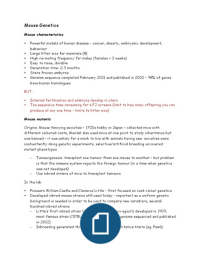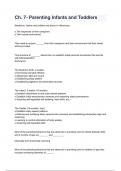Lecture notes
LT5-7 Mouse Genetics
- Module
- BIOL2005 Genetic Systems
- Institution
- University College London (UCL)
UCL BIOL2005 Genetic Systems; 3 mouse lectures - mouse genetics, mouse mutants, dominance and haploinsufficiency, F1 screen, newer screen techniques, genetics of obesity (leptin and MCR gene mutants, cloning process and identification), gene targeting techniques, GWAS study
[Show more]







